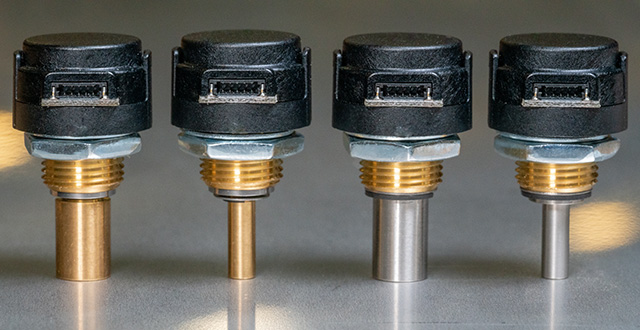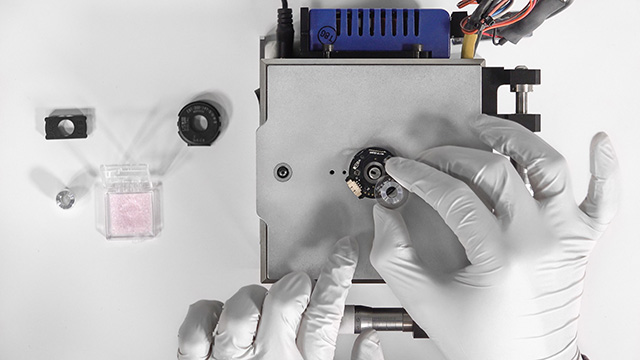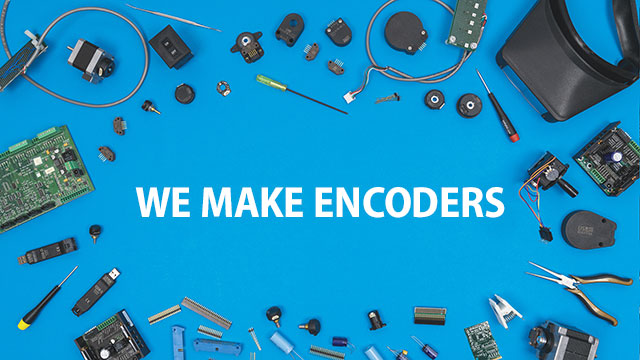Absolute positioning key to our latest automated assembly process
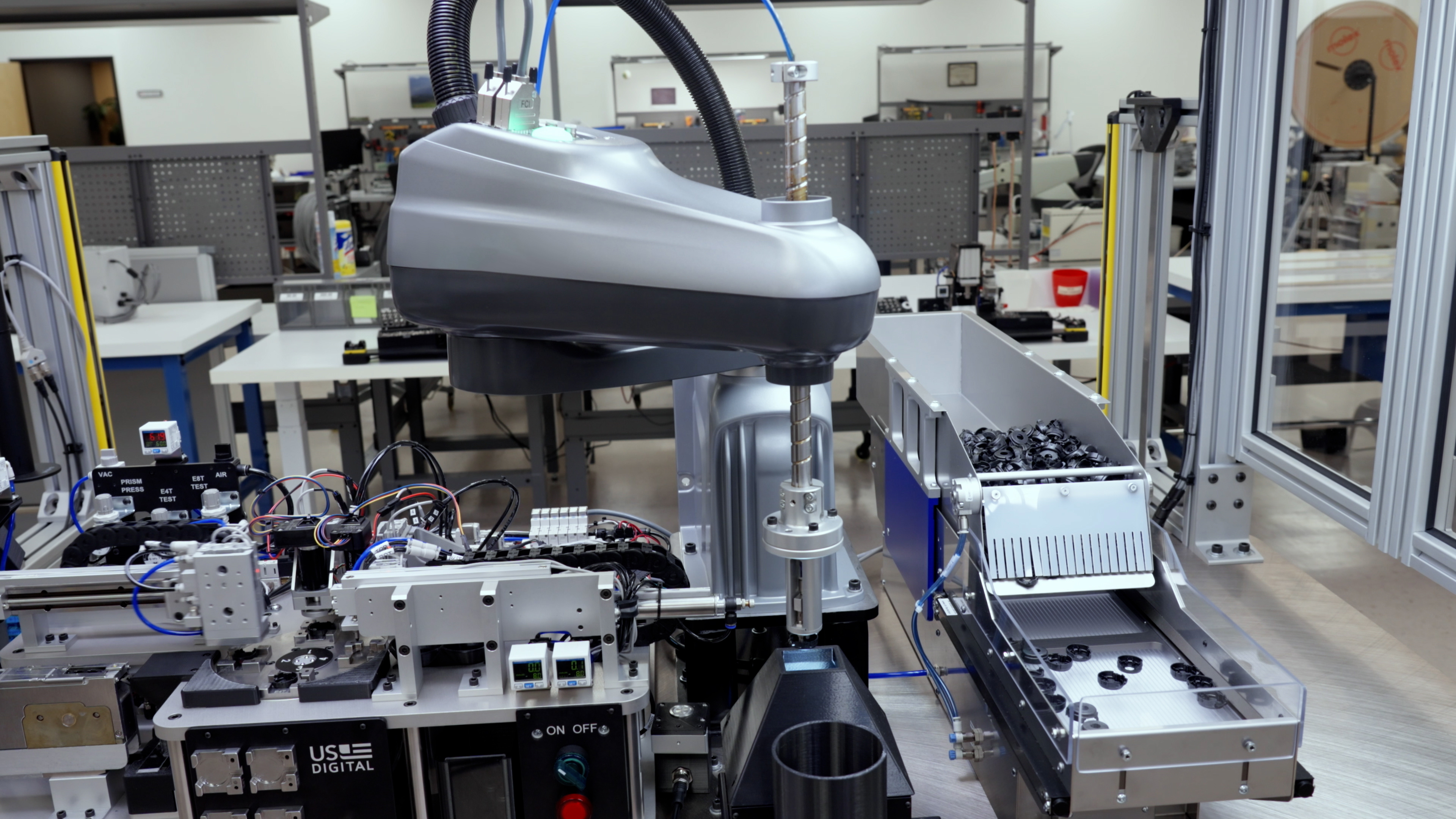 When one of our Mechanical Engineers was looking to automate an assembly process, his design included a SCARA (Selective Compliance Assembly Robot Arm) robot as an essential part of the material handling process. One key reason that robot would be such a great fit was its exact positioning capability.
When one of our Mechanical Engineers was looking to automate an assembly process, his design included a SCARA (Selective Compliance Assembly Robot Arm) robot as an essential part of the material handling process. One key reason that robot would be such a great fit was its exact positioning capability.
While absolute encoders aren't necessary in many applications, there are some where they are indispensable. In this post, we're going to get into some of the details of why a SCARA robot with absolute encoders was a good choice for the design.
Automation was necessary as sales volume grew
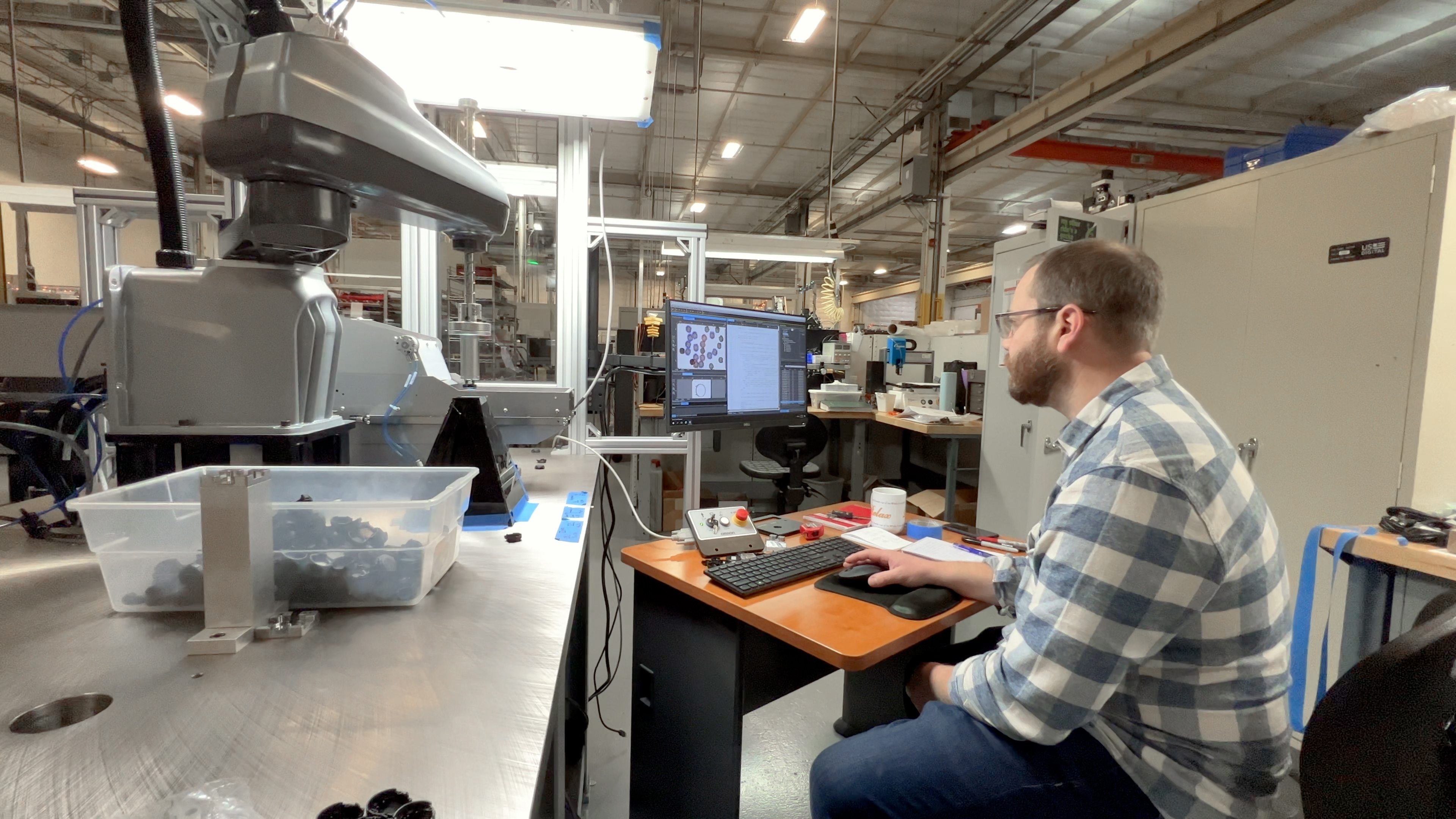 Mechanical Engineer Kyle Viestenz recently deployed a machine that automates testing and the insertion of lenses into our E4T and E8T encoder covers.
Mechanical Engineer Kyle Viestenz recently deployed a machine that automates testing and the insertion of lenses into our E4T and E8T encoder covers.
The process is something that was possible to do by hand, but proved to be more challenging as volume of our E4T and E8T encoders grew over time, Assembly Operations Manager Mike Pomerinke said.
Now that the process is fully automated, our assembly tech can load a hopper with a few thousand encoder covers, load a spool of lenses onto the machine and step away to do other projects for a few hours while the machine runs.
How the automated machine works
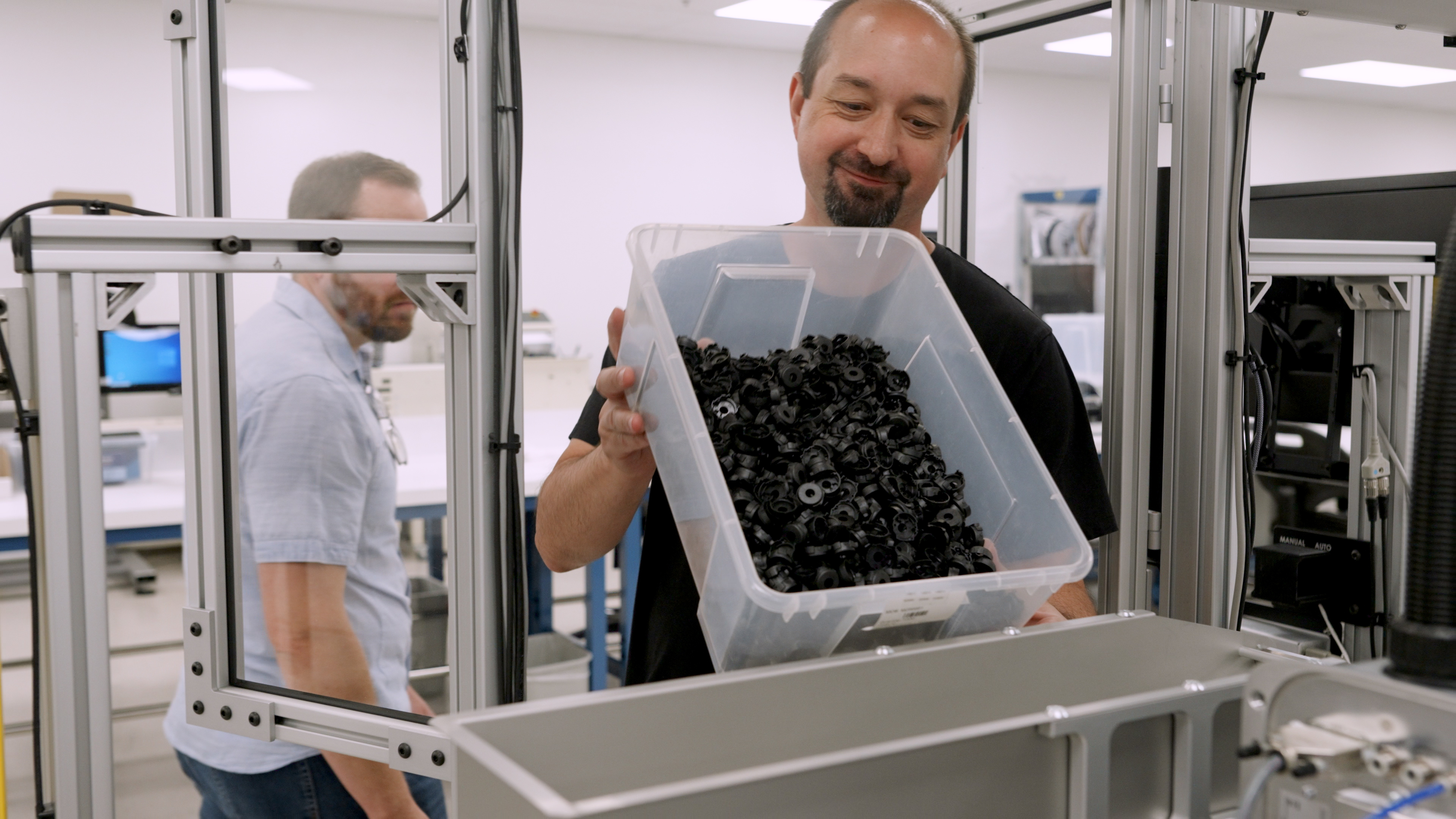 The operator loads covers from a bin into a hopper.
The operator loads covers from a bin into a hopper.
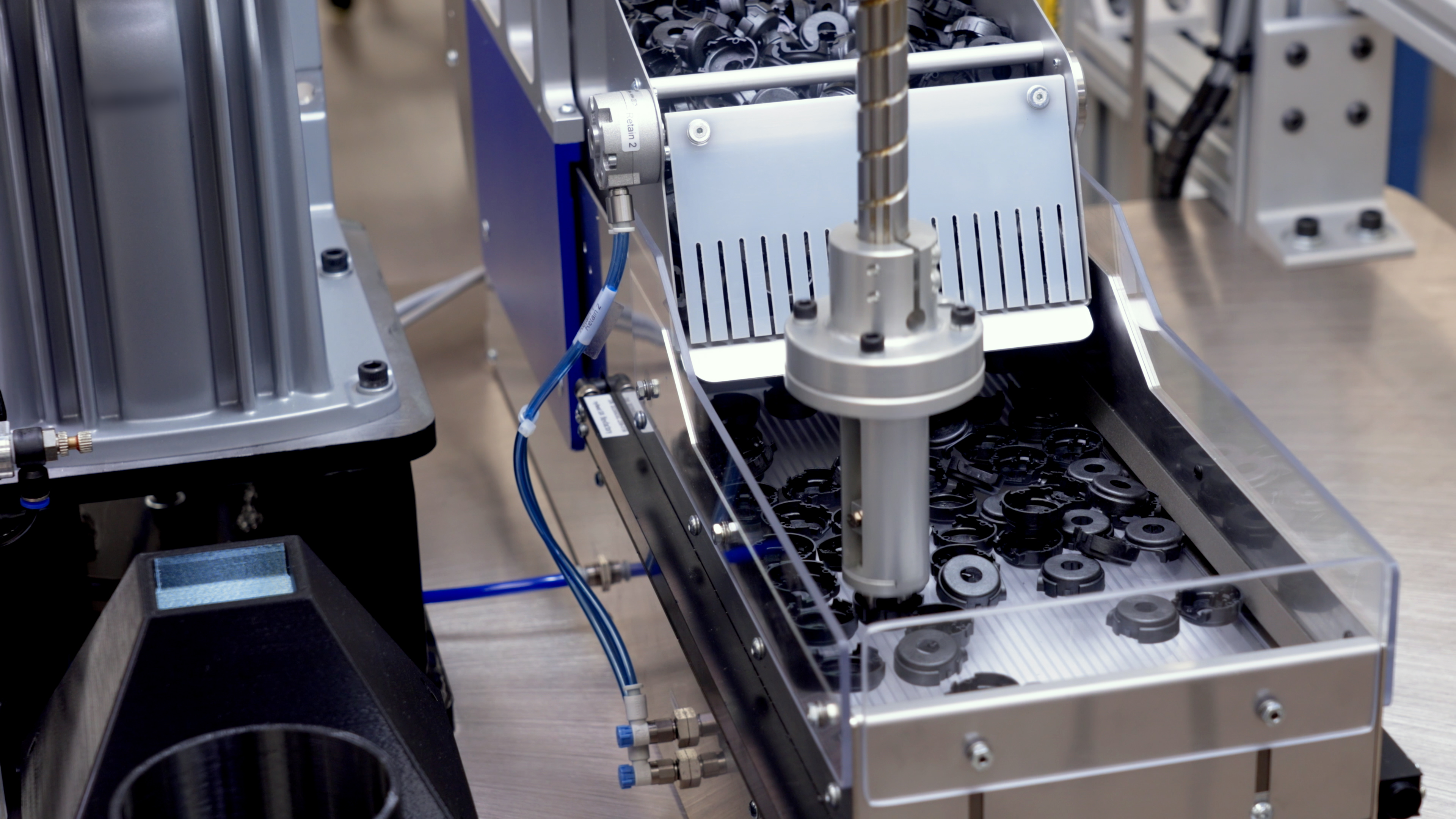 The hopper is part of a flexible feeder, which is essentially a big shaker that dispenses covers onto a flat surface. A camera looks at the covers and reports the positions of those ready to be picked.
The hopper is part of a flexible feeder, which is essentially a big shaker that dispenses covers onto a flat surface. A camera looks at the covers and reports the positions of those ready to be picked.
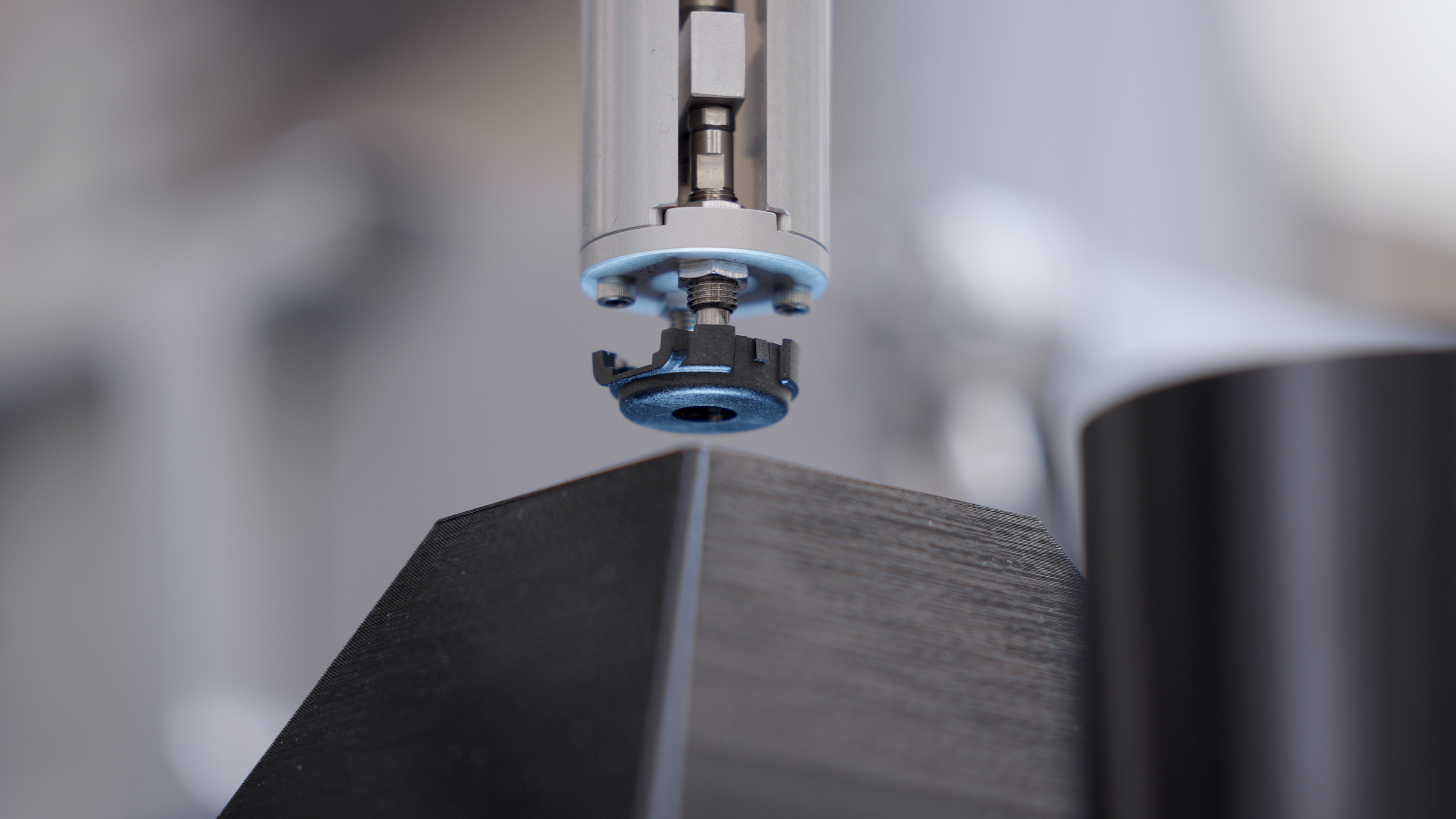 The robotic arm then picks up a cover and moves it into a location where another camera assists with final positional adjustments.
The robotic arm then picks up a cover and moves it into a location where another camera assists with final positional adjustments.
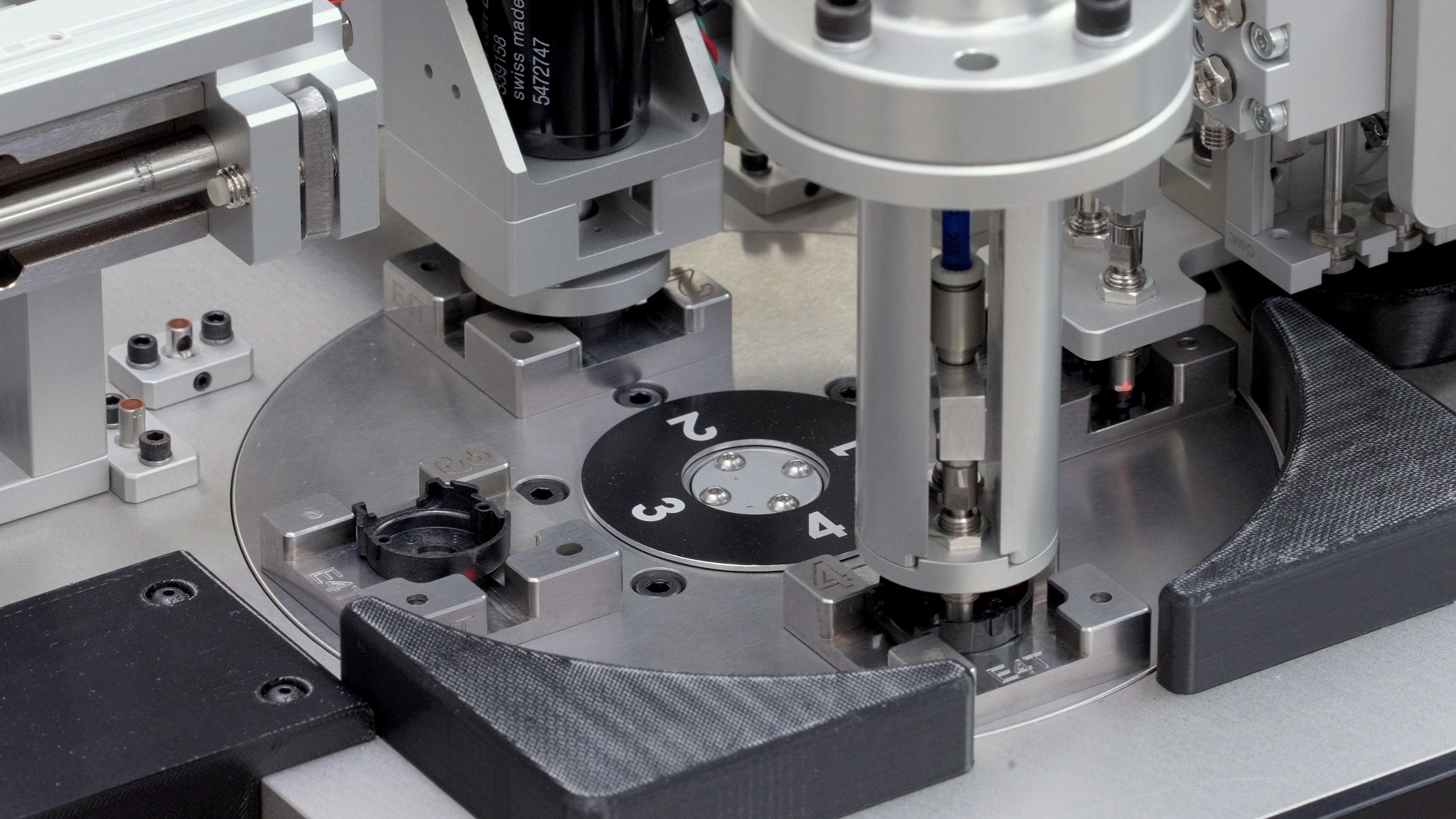 Then the arm places the cover into the nest, where the lens is inserted before the encoder is tested and sorted.
Then the arm places the cover into the nest, where the lens is inserted before the encoder is tested and sorted.
Viestenz chose a SCARA robot for this part of the process because it needed to move components from one position to the next quickly and precisely, while not taking up a ton of space in the assembly area.
Why absolute positioning was key to this design
There is an encoder in each joint of the SCARA robot.
Having feedback is important. Encoders are used to know the precise position of the arm and to control how each motor moves to get to the next location.
While either incremental or absolute encoders could be used for this kind of task, in this case absolute encoders are a better fit, Viestenz said.
Not only do absolute encoders help control the arm with position feedback, they also are critical for what happens after a loss of power.
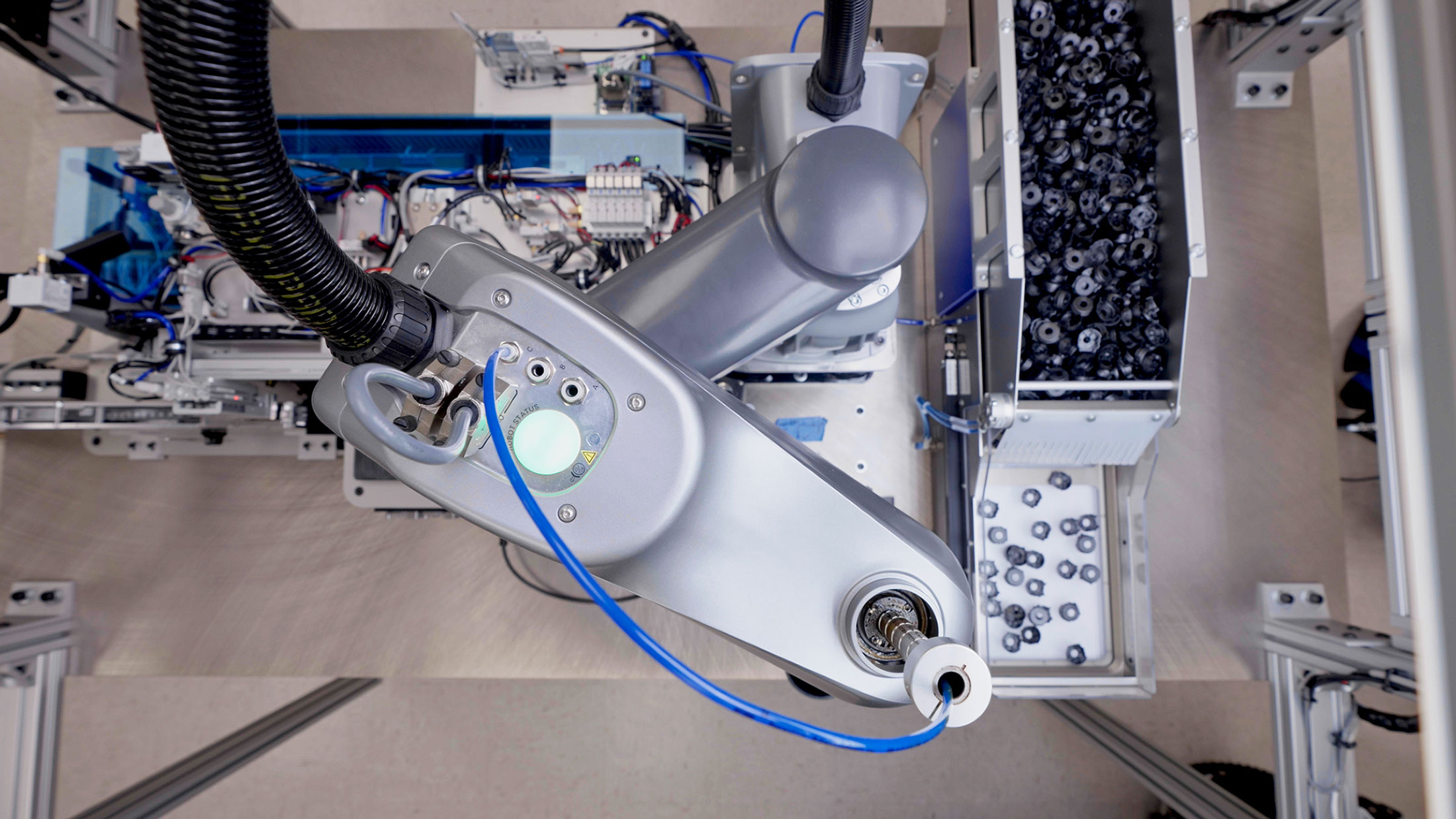 "Let's say I power down the machine and turn it back on. With incremental encoders, this robot would have to rotate every joint until the home position was found," Viestenz said. "With absolute encoders, the robot knows the exact position of each joint immediately without performing any homing cycles."
"Let's say I power down the machine and turn it back on. With incremental encoders, this robot would have to rotate every joint until the home position was found," Viestenz said. "With absolute encoders, the robot knows the exact position of each joint immediately without performing any homing cycles."
Taking the extra time to find a home position isn’t really the problem in this application, he said. There are a lot of obstacles in the robot’s path and rotating each joint without knowing where the arm is could easily cause a collision, damaging the robot or another part of the machine.
Absolute positioning not always necessary
While absolute encoders were key to this application, they aren’t always necessary.
Both can be used to determine speed, direction, acceleration and position but the biggest difference between incremental and absolute encoders is what happens after a loss of power . In general, incremental encoders are cheaper than their absolute counterparts.
Whether you're looking for absolute or incremental encoders, be sure to reach out to us if you need any help finding the right one for your project.
More in News
Stay up to date
Sign up for our newsletter to stay up to date with our product updates, blog posts, videos and white papers.
